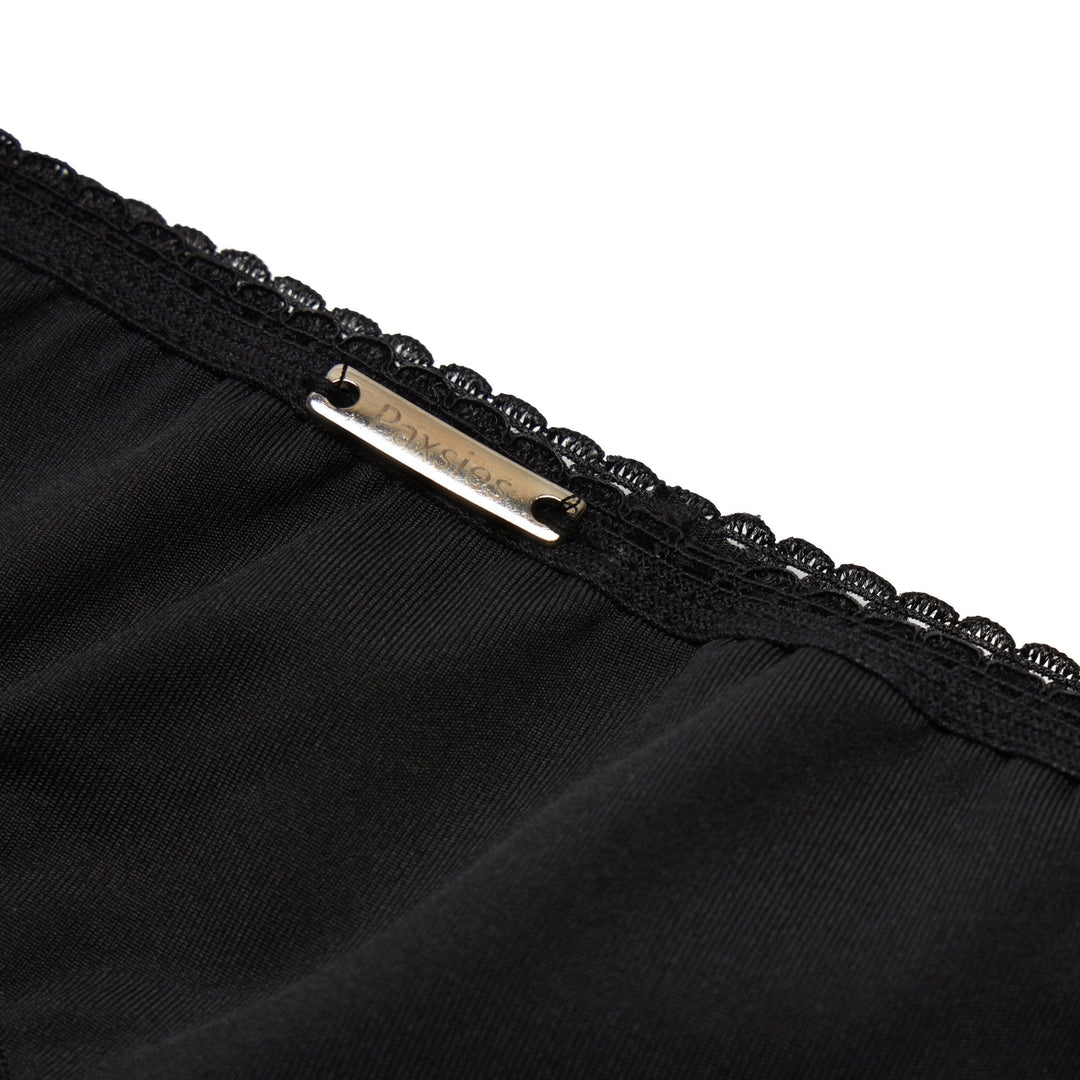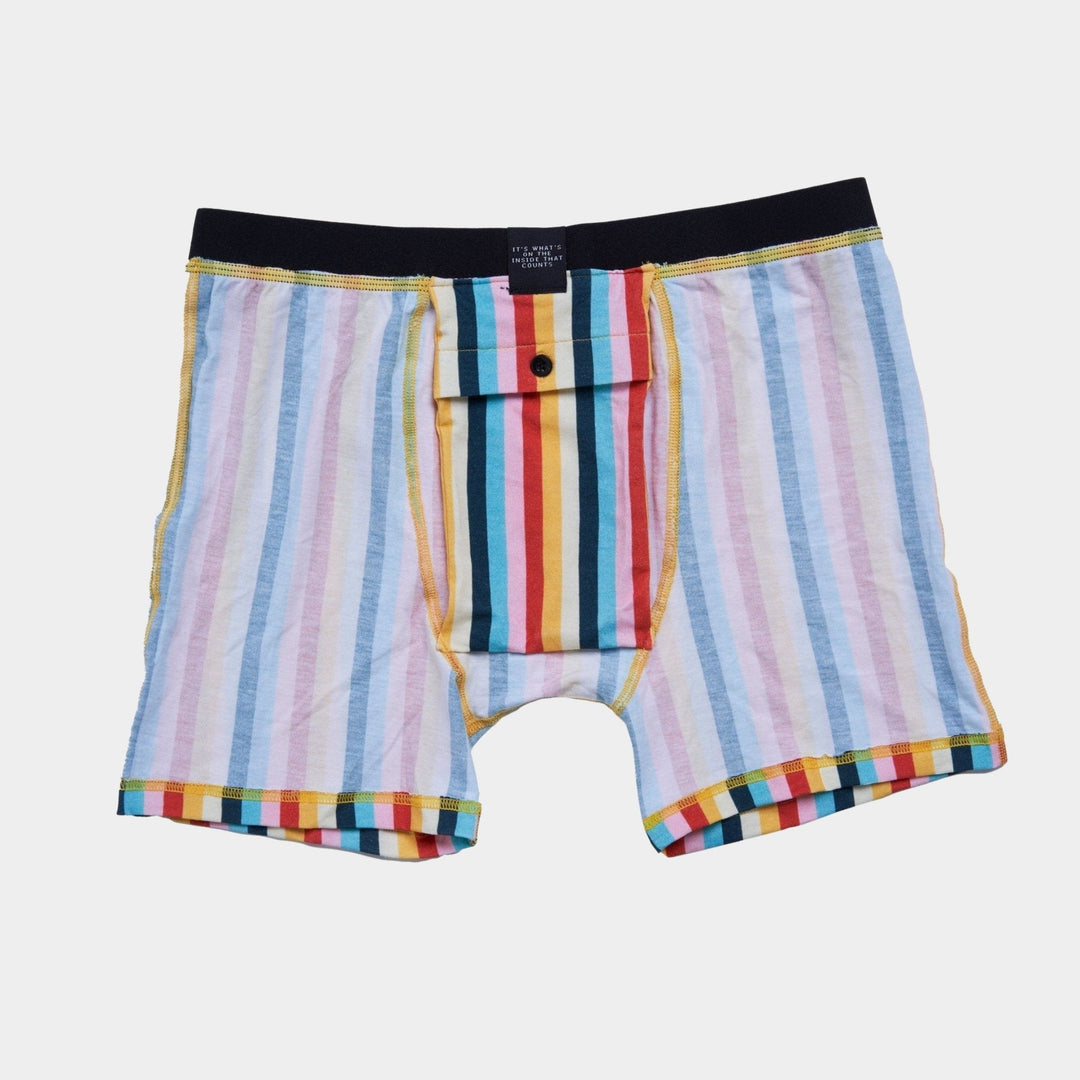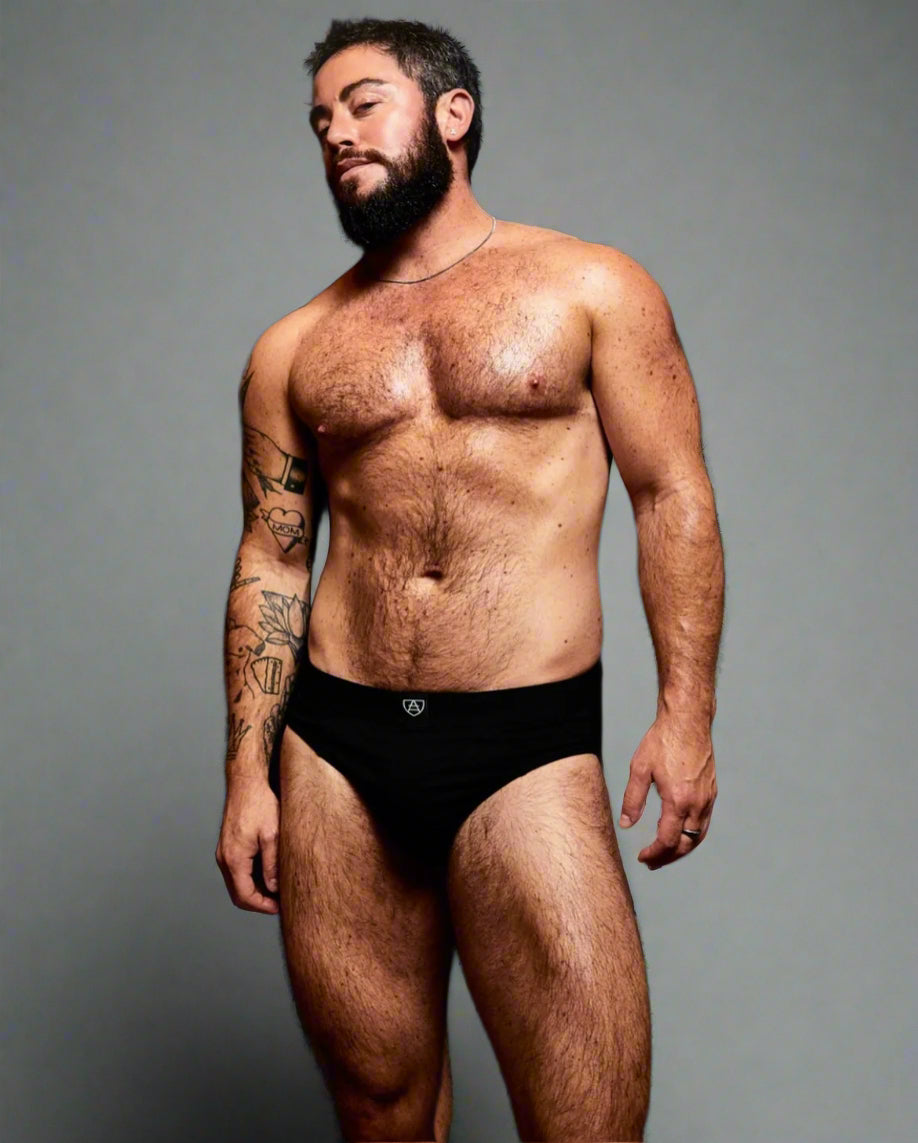Pride For All - Accessibility At Pride
The first Pride was a riot, as the slogan goes, but in many places it’s become more of a festival nowadays. Long marches, big crowds, drag shows, and rowdy parties are to be expected in many cities, and can be a lot of fun. But what if you can’t walk the march, shut down in crowds, can’t see or hear the shows, or get turned away from nightclubs because of your mobility aids?
The pandemic has meant many in-person events have to be rethought, and this is the perfect opportunity for Pride organisers to change things up to make sure Pride events are accessible to the whole community, not just those who are neurotypical and able-bodied. In this post, we’ll take a look at some of the common barriers to people accessing Pride events and how those barriers can be removed to keep LGBTQIA+ community events inclusive to all of us!
Accesibility for people with Physical Disability / Limited Mobility
Hi, Mary here! I’m a part of the Paxsies Team and work on this blog a lot! Usually these posts aren’t the time to get personal, but with this one I thought it would be useful to use my experience to illustrate some of the issues physically disabled members of the queer community face at Pride.
I’m physically disabled myself and recently got a wheelchair, which has really improved my life! But even though it helps a lot, leaving the house still brings a lot of challenges.
After walking with a cane, I thought I had a pretty good idea of what was or wasn’t accessible to disabled people.
Stairs? No.
Lifts? Yes.
Ramps? Yes.
Pavements? (Sidewalks for you Americans.) Yes.
And then I nearly fell off the pavement outside my house into the road on my first attempt to use my wheelchair, and realised it wasn’t that easy.
It turns out lifts are often difficult to use alone in a wheelchair, as the doors close before you have time to get inside and the buttons can be out of reach. Many ramps are too steep to propel yourself up alone, and don’t always leave enough room for turning corners. Pavements tend to slope towards the road and may be uneven or blocked by cars and bins.
What can seem to be an accessible route in theory can be full of challenges you wouldn’t even think of unless you’ve attempted it yourself.
Even though I’d been really hoping I’d get my wheelchair before my city’s Pride events, I began to stress about how I’d manage to go even with my wheelchair. There were several things at previous Pride events I'd been to that I definitely wouldn't be able to deal with now:
- The long march through the city – whether walking with a cane or in a wheelchair, it’s difficult for some physically disabled people to match the pace of abled people or walk for as long. What’s an easy stroll for some is like a marathon for others. And let me be clear on this – using a manual wheelchair is hard work!
- Hills and cobblestones in the march’s route – as I’ve found out these past few weeks, it really doesn’t take much of a slope for it to be difficult to use a wheelchair. And even for someone who can walk, cobblestones are a difficult and potentially dangerous surface.
- Stalls and events held in a grassy park, away from paved paths – Wheelchairs can work on grass, but it varies a lot and is usually harder. You’d complain if you had to walk through a bog or brambles to reach a food stand, wouldn’t you?
- Tight crowds – it’s hard to elbow your way through in a wheelchair, and people walking with canes or other mobility aids they may be unsteady on their feet which makes navigating crowds difficult or even dangerous.
- Lack of seating – one issue that my wheelchair totally does solve for me! But many public spaces lack adequate seating (or it may even have been removed as part of measures against homeless people) and even in grassy areas, sitting on the ground isn’t an option for many disabled people.
- Long queues for food, drinks, bathrooms etc. – again, at least with a wheelchair I can stay sat down, but for many people standing for even 5 minutes straight is difficult and painful.
- Stalls, counters, tills etc too high for wheelchair users to see over – wheelchair users already face difficulties in shops when people behind the till assume we’re not fully cognizant and any random person nearby is the caretaker who will handle the money. When counters are too high to see over or get items off, it only makes it worse.
And that’s aside from the usual difficulties disabled people risk facing every time they leave the house – lack of accessible parking, accessible toilets, harassment, etc. Leaving the house, especially for a big important event like Pride, can be a really big deal.
In the end, my local Pride was cancelled because of the pandemic (which I’m glad for, safety first!) so I’ll have to wait for next year to find out how accessible or not it is for me. But until then, here are my suggestions for how Pride can be more accessible to physically disabled members of the queer community.
- Slow down the march / make it shorter / offer people a lift on the floats – what is practical and helpful will be different in all situations, but for a lot of people the march aspect of Pride is important because of the visibility it brings the LGBTQIA+ community and shows the sort of people who are an active part of that community. Disabled people should also be able to show they can be queer, or lesbian, or gay, or bi, or trans, or ace, or any identity as well as everyone else.
- Make the route and festival areas accessible – the best way to do this I think is for anyone designing a route for the march should attempt it in a wheelchair themselves, and failing that at least consult real disabled people and pay attention to the feedback they give. Avoiding obvious things like cobblestones, uneven pavements, and hills is an easy starting place. It’s fine to have things in a grassy park, as long as everything is accessible by smooth paved paths as well.
- Plan things to avoid bottlenecks and use crowd management strategies to prevent it getting too tightly packed – you don’t have to be neurodiverse or disabled to appreciate how this would make it a better experience for everyone.
- Provide plenty of free and accessible seating in all areas, perhaps with a reminder to prioritise disabled, pregnant, or elderly people like on public transport – Combined with ticket systems for food/drink lines, this could make things a whole lot easier for everyone.
And those are just the ones I can think of from my sofa. I still haven’t had the opportunity to attend a large event in my wheelchair, but I’m sure when I do there’ll be even more challenges and barriers.
This is just one reason it’s so important for disabled people to be involved in planning events like Pride, because you can’t really tell what it will be like until you’ve rolled a mile in these wheels.
I’ll be discussing disability, identity, and accessibility at Pride in the first episode of our upcoming podcast Never Would Have Guest, so keep a lookout for that!
You can follow Never Would Have Guest on twitter @nwg_cast here.
Accessibility for Neurodiverse people
Thank you to my fellow members of the university Neurodiversity and Disability society for your insights for this section!
Many neurodiverse people experience sensory input differently to neurotypical people. Lights, sounds, and sensations can be painful, distressing, and overwhelming at times, especially if there is no way to avoid them. This can make events like Pride not very accessible for neurodiverse people.
For example, loud music is usually playing throughout Pride, and it can be really difficult to find a quiet place to rest away from the crowds. There are often stage shows with flashing coloured lights or strobe lights without warning – not only a possible trigger for epilepsy, but can also be painful for other neurodiverse people to watch. All of these things and more can make attending Pride difficult for neurodiverse people.
A few suggestions to help make Pride events more accessible could be to offer earplugs to help with the noise, schedule events that don’t include loud music and strobe lights with a smaller number of attendees, and create calm, quiet areas for people to relax and destress in if they want to.
My local Pride offered a ‘youth chillout tent,’ for people under 25, but while I think it’s a good idea to have youth areas available at pride, there are neurodiverse people of every age and there should also be provisions for older people too.
As with any accessibility issues, the best way to solve these problems is to include the people who experience those issues in the decision-making process, and truly listen to what they say.
It’s really important we make events for the LGBTQIA+ community accessible for neurodiverse people. They already face a lot of prejudice and ignorance from all parts of society. Many people still hold misconceptions about neurodiverse people and sexuality, such as believing they are incapable of adult romantic and sexual relationships, or of understanding and experiencing their own sexuality, which simply isn’t true.
By creating Pride events that are accessible to neurodiverse people, we will be demonstrating through our actions that they have a place in the LGBTQIA+ community and deserve to be visible, rather than just affirming it through empty words.
Accessibility for People with Visual Impairment
Thank you to Bethan for your insights for this section!
Visually impaired people can face a range of challenges in attending events like Pride, some of which overlap a bit with physical disabilities, and some which are unique.
My friend outlined some of the difficulties events can pose, and how they can be made more accessible.
- Braille and large print versions of all maps, signs, and information sheets should be easily available
- Guide dog facilities – Pride usually happens in the summer, so guide dogs need places to drink and for shade to be available in the heat, and areas for the dogs to relieve themselves
- Unfamiliar environment – Pride is noisy and busy, and usually set up in a temporary location that doesn’t have the normal underfoot markers for crossings, pavements, and different areas, so it can be really difficult for a visually impaired person to navigate alone. Providing guides at the event can help with this, as not everyone will have someone they know they are comfortable bringing to Pride events.
Again, the best way to make sure the event is accessible to visually impaired people is to include them in planning the event and listen to their needs.
Accessibility for people who are Deaf / Hard of Hearing
Thank you to Chloe for your insights for this section!
Interpreters are a really important part of making events accessible for Deaf people. Performances and speeches can have interpreters on the stage, and interpreters can also be available at easy to find locations so people can ask them questions and recieve directions.
It's also important to make sure information is presented in multiple ways, so if it's an announcement over tannoy for example also having the information available on screens and signs for people to read.
I'm aware including Deafness as a disability is a point of debate within the Deaf community, but I've included it in this article as these are still accomodations events should make.
Why should we bother making events accessible?
The fact that some members of the LGBTQIA+ community are excluded from what is meant to be an event for the entire community should be reason enough. But if you need it to be more about you in order for you to care, try imagining this:
One of your friends is throwing a party for everyone! You’re not sure if you’re invited, but they say of course you are! This is the best most important party of the year!
So you get to their house and go up to the door. There is a 3-metre-tall ledge with no handholds that the door it on top of. Your friend is a sporty, active person who jumps up and down this ledge without thinking every day, just like all of their other friends, but you are not.
You ask if there’s another way in. Someone gets out a ramp. This ramp is only 85 degrees instead of 90 like the ledge is, so of course you will have no problem using it.
You finally get up the ledge and go inside. There is a bucket of freezing cold water on top of the door that falls and soaks you. Your friend and all their other friends love swimming in the North Sea in winter, so enjoy this. You are freezing and miserable.
The hallway is a treadmill going very fast. You have to run along it to reach the rest of the party. You cannot run as fast as this treadmill. Your friend and all their other friends are very fast runners, and don’t even notice the treadmill.
You finally reach the living room. The lights are off, but there is a fire engine with lights and sirens blaring. It hurts your ears and your eyes. Your friend and all their other friends love fire engines, so they are having fun.
As fun as making up this terrible party is, I’ll leave it there. If this happened to you, you’d probably be pretty hurt by your “friend.” Why did they say it was a party for everyone, when clearly it was only for sporty athletic people who like swimming in cold water and love fire engines? It’s pretty obvious your friend wasn’t thinking about you at all. They probably didn’t think you’d even come. They clearly don’t care if you’re at the party or not.
This example might sound silly, but if you’re in a wheelchair and need to get up a curb does it really matter if the curb is 6 inches or 3 metres? If the sound is hurting you, does it really matter that it’s not as painful to someone else? You’re a person who deserves to be there as much as anyone else in the room, or in the parade.
It’s time Pride event organizers respect that.
Don’t forget to sign up to our newsletter to get all the latest Paxsies news, read all our new blog posts, and get a 10% off coupon for all items!









